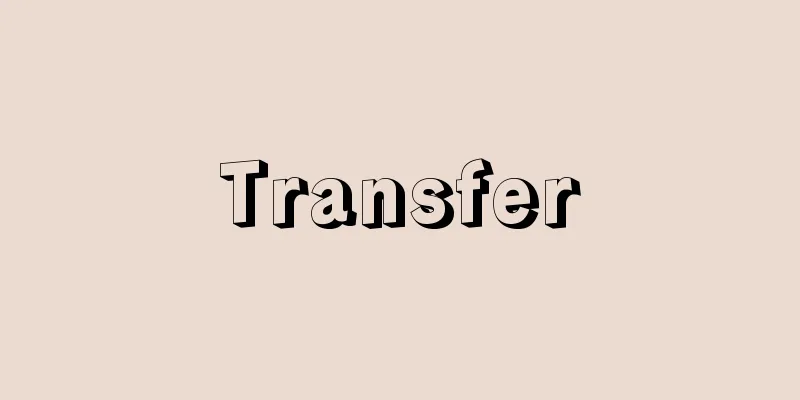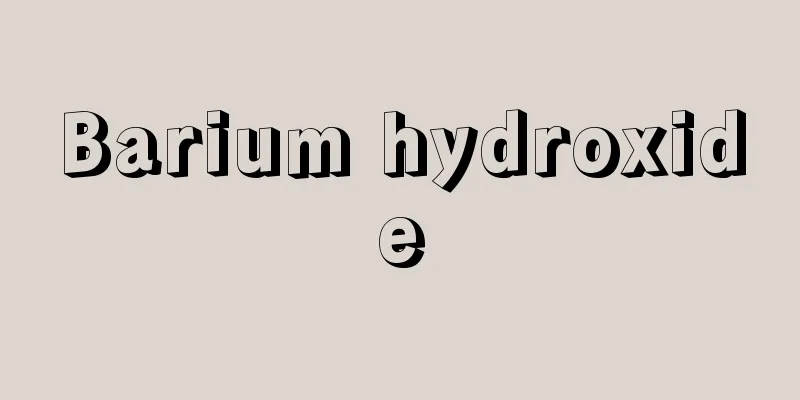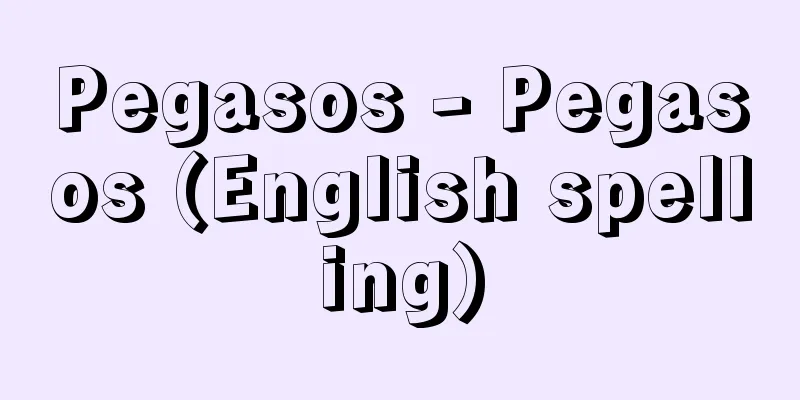Transfer

|
Transfer is the effect of previous learning on subsequent learning, and is related to many factors. The phenomenon of generalization, in which the learning effect spreads to other situations, can also be considered a form of transfer. The spread of such learning effects depends on what the experimental subjects have learned, that is, what stimuli they received or how they were controlled by a given stimulus (stimulus control). [Transposition] Transposition is an example of an animal's learning of the "relationship" between stimuli that controls subsequent learning. Köhler, W. (1939) gave chickens a simultaneous discrimination task in which they were asked to discriminate between light and dark gray cards presented simultaneously. If they approached the light card, they were given a reinforcer (represented as S + ), and if they approached the dark card, they were not reinforced (represented as S- ). After sufficient training, the chickens began to choose S + . In the next training, Köhler simultaneously presented the light gray card used as S + in the previous training and an even lighter card to see which one they would choose. The chickens chose the brighter card, a stimulus they had never seen before. This was called transposition because it was thought to be the result of the chickens' learning of the relationship between stimuli, just as if they were moving from the original key to another key without changing the form of the piece of music (this idea is called the relational theory). In contrast to the relational theory, there is a theory (called the absolute theory) that claims that experimental subjects only learned about two stimuli separately, and did not learn about the "relationship" between the two. Spence, K. (1937) explained the transposition seen in simultaneous discrimination situations and the peak shift seen in successive discrimination situations in which only one of various stimuli is presented at a time, using the absolute theory. In principle, S + acquires an excitatory strength, and S- acquires an inhibitory strength, and a generalization gradient develops around each stimulus, and the response that appears is determined by the residual (net) strength obtained by subtracting the inhibitory strength from the excitatory strength. On the other hand, there are experimental results that cannot be explained by the absolute theory but are favorable to the relational theory. Therefore, it is a reasonable conclusion that when experimental subjects learn to discriminate, they can progress their learning depending on the method of stimulus presentation and the nature of the task, and can use both the absolute properties of the stimuli and the relationships between the stimuli. [Overlearning and reversal learning] Transfer of learning can also be seen when a subject continues to learn the same thing after learning has been completed, i.e., when overlearning or overtraining is given. For example, when a subject is asked to discriminate between white stimuli as S + and black stimuli as S- , and after a certain standard is reached and learning is completed (standard training), the reward relationship between black and white is reversed and white is taught as S- and black as S + (this is called reversal learning or reversal training). In some cases, reversal learning may be performed better when additional learning (overtraining) is given and reversal is performed than when reversal is performed immediately after the initial learning is completed. This is called the overtraining reversal effect (ORE). ORE is often explained by the hypothesis (attention theory) that selective attention to stimuli is formed by overtraining, which promotes reversal learning (Mackintosh, NJ, 1975). On the other hand, when animals are trained in a simple situation such as a straight running track, the phenomenon of faster extinction (lower extinction resistance) is observed when extinction trials are given after overtraining (overtraining group) than when extinction trials are given immediately after continuous reinforcement (a procedure in which reinforcers are given for each trial) until the running response stabilizes (this is called the asymptotic value) (baseline training group). This is called the overtraining extinction effect (OEE). OEE has been explained by the hypothesis that the accumulation of frustration in the overtraining group during the extinction situation interferes with running and speeds up extinction (Amsel, A., 1967) and the hypothesis that performance during extinction is determined by whether it is easy to distinguish between the training and extinction situations (generalization decrement hypothesis) (Capaldi, EJ, 1967). Mainly in discrimination learning situations, learning in which standard training and reversal training are repeated many times is called serial reversal learning. In this case, as training is repeated, the learning performance in the subsequent training (both standard and reversal) gradually improves. This phenomenon is called progressive improvement (PI) and is explained by the concept of selective attention mentioned above. [Learning set] Transfer of learning occurs not only when the relationship between S + and S- is reversed and simply alternated, but also when the stimuli used in training and the test scene are completely different. Harlow, HF (1949) gave two rhesus monkeys more than 300 different visual discrimination tasks. Two different stimulus objects were S + and S- , respectively, and this was performed six times (six trials constitute one discrimination task). Next, another stimulus was S + and S- , and this was also performed six times. By continuing the experiment with new tasks one after another in this way, the accuracy rate at first was at chance level, but gradually improved, and by the 250th question, the correct answer was immediately achieved. The improvement in learning observed throughout the series of discrimination tasks was thought to be due to the monkeys learning how to learn and forming a learning set or learning posture. This means that transfer from task to task has occurred. There is a study (Warren, JM, 1965) that compared the learning set acquisition ability of different animal species based on the data of learning set experiments. According to the study, rhesus monkeys learned the fastest, squirrel monkeys and cats were slower, and rats and squirrels were extremely slow. This result is seen as suggesting that the higher an animal is in terms of phylogenetic development, the better its ability to learn and use abstract information from various discrimination tasks. However, it is known that each animal has its own specialty, and that they have diverse abilities that are by no means unequivocal, depending on the nature of the task, the type of response required, and the characteristics of the stimuli used, and therefore a simple ranking is not appropriate. [Latent learning] When animals are trained to learn, reinforcers (rewards) are usually given. This is because it is said that learning is unlikely to occur through simple exploration behavior in a device without reinforcers (Hull, CL, 1943). However, even in such cases, it can affect subsequent behavior and learning (transfer). Tolman, EC et al. (1939) divided rats into three groups and trained them for 17 days in a maze with 14 branching points, with one trial per day. The first group was only allowed to explore, and no reinforcer was given at the end point (goal). The second group was given a reinforcer at the goal of each trial. The third group did not receive a reinforcer for the first 10 trials, but was given one from the 11th day onwards. When the number of times the rats entered a dead end was considered an error, the performance of the first and third groups was inferior to that of the second group. What is noteworthy is the performance of the third group from the 11th day onwards. From the 12th day onwards, they recorded better results than the second group, which had been given reinforcers from the beginning. Tolman and his colleagues believed that the rats in Group 3 had progressed in learning even without reinforcers, but had simply not expressed this in behavior (performance) (hence the term latent learning); however, once they were given the opportunity to be motivated to express it (i.e., when reinforcers were given), it would suddenly surface in behavior. This result showed that reinforcers are not a necessary condition for learning to occur, and this idea is still accepted today. This type of research served as a catalyst for progress in research into the role that reinforcers play in learning, and can be said to have contributed to the development of learning theory. →Generalization →Discrimination learning →Respondent conditioning [Ishida Masato] Latest Sources Psychology Encyclopedia Latest Psychology Encyclopedia About Information |
|
転移とは,以前に学習したことが後の学習に影響を及ぼすことであり,多くの要因が関係する。学習効果が他の場面へ拡大することでは,般化generalizationの現象も転移の一つといえる。このような学習効果の拡大は,実験対象がいったい何を学習したか,つまりどのような刺激に,あるいはどのようにして所定の刺激によって制御されたか(刺激性制御stimulus control)に依存する。 【移調transposition】 動物が,刺激間の「関係性」を学習したことで後続の学習が制御される例に移調がある。ケーラーKöhler,W.(1939)は,ニワトリに明るい灰色のカードと暗い灰色のカードを同時に呈示して弁別を行なわせる同時弁別simultaneous discriminationの課題を与えた。明るいカードに近づいたら強化子を与え(S+と表わす),暗いカードに近づいたら強化しなかった(S-とする)。十分な訓練の後でニワトリはS+を選択するようになった。次の訓練においてケーラーは,前の訓練でS+として用いた明るい灰色カードと,それよりいっそう明るいカードの二つを同時呈示して,どちらを選択するかを見た。するとニワトリは,今まで見たことのなかった刺激であるいっそう明るいカードを選択した。まるで楽曲の形を変えずに原調から他の調に移るがごとく,ニワトリが刺激間の関係性を学習したことによる選択結果であると考えられることから(この考え方を関係説relational theoryという),移調とよばれた。 関係説に対して,実験対象は二つの刺激について別々に学習しただけで,2者間の「関係」について学習したのではないという考え方(絶対説absolute theoryといわれる)がある。スペンスSpence,K.(1937)は,同時弁別事態で見られる移調と,さまざまな刺激がいっときに一つしか呈示されない継時弁別successive discrimination事態で見いだされる頂点移動peak shiftを絶対説で説明した。原理的には,S+が興奮性の強度を,S-は制止性の強度を獲得するというものであり,それぞれの刺激の周辺において般化勾配が発達し,出現する反応は,興奮性の強度から制止性の強度を差し引いた残差(正味)の強度で決定されるとした。しかし一方では,絶対説では説明できないが関係説に有利な実験結果も存在する。したがって,実験対象が弁別学習をする際に,刺激呈示の方法や課題の性質に応じて学習を進行させ,刺激の絶対的な特性と刺激間の関係性の双方を用いることができるというのが妥当な結論である。 【過剰学習と逆転学習】 学習の転移は,ある事柄に関して学習が完成した後に引き続いて同じ学習を続けること,つまり過剰学習overlearningまたは過剰訓練overtrainingを与えた場合にも見られる。たとえば,白色刺激をS+とし,黒色刺激をS-とする弁別学習を行なわせ,一定の基準に到達し学習が完成した(基準訓練)後に,黒白に対する報酬関係を入れ換え,白色をS-に,黒色をS+とする学習を行なわせた場合(これを逆転学習reversal learning,または逆転訓練reversal trainingという),最初の学習完成後直ちに逆転を行なう場合よりも,追加の学習(過剰訓練)を与えた後に逆転を行なう方が,逆転学習の成績が良い場合がある。これを過剰訓練逆転効果overtraining reversal effect(ORE)という。OREは,過剰訓練を与えることにより刺激への選択的注意が形成され,逆転学習が促進されるという仮説(注意説)により説明されることが多い(Mackintosh,N.J.,1975)。 他方,動物を直線走路のような単純な事態で学習させる場合,走行反応が安定する値を示すまで(これを漸近値という)連続強化(毎試行に強化子を与える手続き)で訓練し(基準訓練群),そののち直ちに消去試行を与える場合よりも,過剰な訓練を続けた後に消去試行を与える(過剰訓練群)方が消去が速い(消去抵抗が低いと表現する)現象が見られる。これは過剰訓練消去効果overtraining extinction effect(OEE)といわれる。OEEは,消去事態における過剰訓練群のフラストレーションの蓄積が走行を妨害し消去を速めるという仮説(Amsel,A.,1967)や,訓練と消去の事態との弁別が容易であるか否かにより消去における遂行が決定されるという仮説(般化減少説)により説明されている(Capaldi,E.J.,1967)。 主に弁別学習事態において,基準訓練と逆転訓練を何度も繰り返す学習を連続逆転学習serial reversal learningという。この場合,訓練を反復するにつれて,続く訓練(基準・逆転の双方)における学習成績がしだいに改善される現象が見られ,これは漸次的改善progressive improvement(PI)といわれ,前述した選択的注意の概念により説明されている。 【学習セットlearning set】 学習の転移は,S+とS-の関係を逆転させ,それを単純に交替しつづける場面だけではなく,訓練で用いた刺激とテスト場面での刺激がまったく異なる場合においても生じる。ハーローHarlow,H.F.(1949)は,300以上の異なる視覚弁別課題を2頭のアカゲザルに課した。二つの異なる刺激対象がそれぞれS+とS-にされ,これを6回試行した(6回の試行が一つの弁別課題を構成する)。次に別の刺激がS+とS-にされ,やはり6回試行した。このようにして次々と新しい課題で実験を続けると,初めは偶然的水準の正答率であったが,しだいに改善され,250問目になると直ちに正答に達した。一連の弁別課題を通して見られた学習の改善は,サルが学習の仕方を学習したことにより,学習セットまたは学習の構えを形成したと考えた。これは,課題から課題への転移が生じたことになる。 学習セット獲得能力を,異なる動物種で行なわれた学習セット実験のデータに基づいて比較した研究(Warren,J.M.,1965)がある。それによれば,アカゲザルが最も速く学習し,リスザルやネコはそれより遅く,ラットとリスはきわめて遅いことが示されている。さまざまな弁別課題から抽象的な情報を学習し,それを利用する能力が系統発達的に見て高等な動物ほど優れていることを示唆する結果と見られている。しかし,各動物にはそれぞれ得意分野があり,課題の性質,必要な反応の種類,用いられる刺激の特徴などに依存して,決して一義的ではない多様な能力を有することが知られており,単純な序列化は適切ではない。 【潜在学習latent learning】 動物を用いて学習させる場合,通常は強化子(報酬)を与える。強化子なしの単なる装置内の探索行動によっては学習が生起しにくいといわれるからである(Hull,C.L.,1943)。しかし,そのような場合でも後の行動や学習に影響を与える(転移する)ことがある。トールマンTolman,E.C.ら(1939)は,ラットを3群に分け,一日1回の試行のもと14の分岐点をもつ迷路で17日間訓練した。第1群は探索だけの条件であり,終点(目標)では強化子は与えられなかった。第2群は毎試行目標において強化子が与えられた。第3群は初めの10回の試行までは強化子がなかったが,11日目からはそれが与えられた。ラットが袋小路に入り込んだ数を誤反応としたところ,第1群と第3群の成績は,第2群よりも劣っていた。注目すべきは第3群の11日目以降の成績である。12日目からは,最初から強化子が与えられていた第2群を上回る好成績を記録したのである。トールマンらは,第3群のラットは,強化子なしでも学習を進行させていたが,行動(遂行performance)として表わさなかっただけであり(したがって潜在学習という),それを表わすよう動機づけられる機会があれば(つまり強化子が与えられれば),一気に行動として表面化させたのだと考えた。学習の生起にとって強化子が必須条件ではないことを示した結果であり,その考え方は現代でも受け入れられている。この類の研究が契機となって,強化子が学習に対してどのような役割をもつかについての研究に進展し,学習理論の発展に寄与したといえる。 →般化 →弁別学習 →レスポンデント条件づけ 〔石田 雅人〕 出典 最新 心理学事典最新 心理学事典について 情報 |
Recommend
Corporal punishment
According to a 1948 (Showa 23) notice from the At...
Diesel car - Diesel
A rail vehicle equipped with a steam, gasoline, or...
Bell tower - Shoro
A building for hanging a bell and ringing it. It ...
Die Walküre (English)
…The prologue, Das Rheingold (1 act, 1854), tells...
al-Zarqali (English spelling)
…The solitary mystic Ibn al-'Arabi wrote the ...
Yoritoyo Inoue
1912-1996 A cellist from the Showa-Heisei era. Bo...
Asuka - Asuka
…For this reason, Emperor Augustus attempted a cu...
Francesco Guardi
Italian painter. A member of the Guardi family, a...
From Kanze
…Some of these are further twisted together to ma...
Sento Imperial Palace
The Imperial Palace of the retired emperor or ret...
Maestra, Sierra (English spelling)
… [Nature] About 60% of the country's land ar...
Monodentate Ligand - Ichizahaishi
…Yuji Shibata, who had worked in Werner's lab...
Drosophila melanogaster - Drosophila melanogaster
This insect belongs to the family Drosophilidae, ...
Epipomponia hagoromo (English spelling) Epipomponia hagoromo
…[Hiroshi Inoue]. … *Some of the terminology expl...
Furtwängler
German conductor and composer. Born in Berlin to t...

![Higashi Izumo [town] - Higashi Izumo](/upload/images/67cc996b6093c.webp)




![Tanno [town] - Tanno](/upload/images/67cc2aa494bdf.webp)


